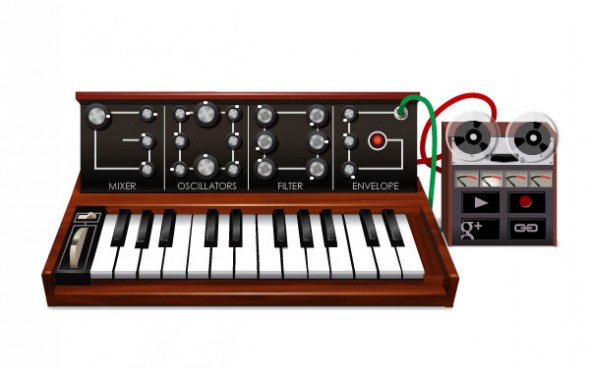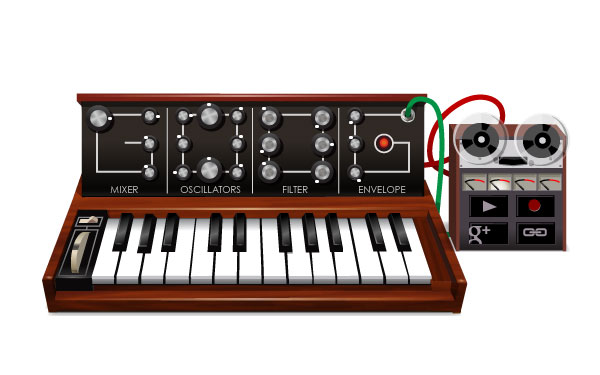
Today’s Google Doodle is one of the search giant’s most popular to date with people loving the ability to play with a software synthesizer in the style of a traditional analogue Moog, and it demonstrates quite how far science and technology overlap with art, and how much they are one and the same.
Traditionally artists are thought of as those with creative minds who paint great frescos and craft sculptures, whilst scientists have been regarded as analytical or geeky and boring. This is certainly the impression given off at school where it remains “cool” to do the arts, whilst the number of those opting to study the sciences is declining. The current UK government is clamouring to get people to study science because they think of technology as the future of our economy – but that isn’t the way to get people excited about science and technology.
Rather than attempting to show those aged 14 why science would be a good career path, which most will completely ignore, we should be demonstrating just how creative science and technology are. Young people are creative and we need to channel that creativity beyond simply the arts and humanities. People don’t pick up instruments simply because they want to get famous – they pick them up because they want to express themselves, to show a little more of themselves, to have the thrill of playing something that will connect with people.
Art is simply the expression of a deep understanding of how people connect with each other and the surrounding world – whether that is how the sound waves get people to dance or the way the light reflects off a sculpture it is all science at its root. But the important part here is learning these skills don’t feel like learning anything geeky, they feel like learning the tools you need for self-expression.
Technology is in our lives now more than ever, but fewer and fewer people understand how it all works at even a basic level because we don;t see technology as something to be embraced and toyed with, we see it as something to use. Robert Moog, the inventor of the Moog synthesizers saw that with the advent of technology we have ever more ways to affect our surroundings to make art from the science. Without him there would have been no Kraftwerk and without them we wouldn’t see many of the rapidly exploding genres of electronic music.
To be a professional musician you have always had to know about the effects of stretching materials with regard to pitch and how different rooms or outdoors affect the sound. Artists need to know how they can mould and reform materials and blend colour palettes and shapes so that they they appeal to the human eye. Pioneers like Moog simply took these skills to transistor technology and synthesized sounds. This embracing of physics as a means of creating art is something that we should be championing to get people interested in science again, not a future of being a lab rat for a big pharmaceutical company.
Yes scientific discoveries need to be analytically discussed, but there is more to science and technology than that. It is the creativity of scientists that give the inspiration of where to look for new life saving drugs, it is the inspiration of scientists that have made 3D printing a possibility, making the development of complex structures trivial in comparison with decades past, and it is the inspiration of scientists that have unlocked a musical toolbox with sounds more varied and complex than the world has ever considered. This is why people should study science.

